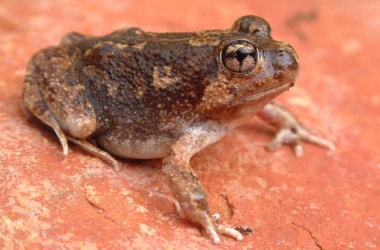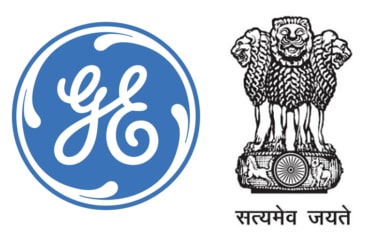▼ My Plant: mobile app for recording data on tree plantation [06-26-17]
 Maharashtra Forest Minister, Sudhir Mungantiwar announced on 23 June 2017 that the government plans to launch a mobile app named My Plant on 1 July 2017. Maharashtra Forest Minister, Sudhir Mungantiwar announced on 23 June 2017 that the government plans to launch a mobile app named My Plant on 1 July 2017.
The app would help in recording data regarding tree plantations in the state.
App makes it possible to upload information of all the tasks given to the government departments in the tree plantation programme including the name of the tree species being planted and the status.
The Forest Department has set a target of planting four crore saplings through public participation between 1 and 7 July 1.
Many social and voluntary organisations, industry and trade representatives also plant trees on a large scale.
After downloading the app, the people or organisations would be able to feed in the data about the number of saplings they have planted with the Forest Department.
The details of the plantation including the number, the species and other details would help in creating a database of trees. Information on the app will be automatically recorded on the department’s website.
The app will advance the mission of planting 13 Cr trees in 2018.
The data bank will help the Ministry to figure out the performance of different districts along with the innovative concepts implemented by them.
The Ministry has also completed the preparations for 4 Cr tree plantations this year. So far, 4.41 Cr pits have been dug and over 16 Cr saplings have been made available.
|
▼ First global assessment of climate change on coral reef by UNESCO [06-26-17]
 A report by UNESCO has concluded that cutting down emissions and delivering the Paris Climate agreement to be the only ways out to save coral reefs the world over. A report by UNESCO has concluded that cutting down emissions and delivering the Paris Climate agreement to be the only ways out to save coral reefs the world over.
This is the first global assessment of the impact of climate change on world heritage listed coral reefs.
The assessment studies the impact of climate change on 29 world Heritage-listed coral reefs.
The assessment has found that local responses are no longer sufficient.
The report has found that global warming caused by an increase in frequency, intensity, and duration of heat-stress events has massive consequences for the 29 world heritage sites.
The report has warned that world’s coral reefs will die out completely by mid-century unless carbon emissions are reduced.
The consequences could also be severe for millions of people worldwide.
It is estimated that at least 25 coral reefs are set to experience twice-per-decade severe bleaching events by 2040.
As per the report in the last three years, 25 out of 29 coral reefs which comprise three-fourths of the world’s reef systems has experienced severe bleaching events which are labelled as the worst-ever sequence of bleachings to date.
According to the report, by 2100 most of the coral reef system would die unless carbon emissions are reduced.
Coral Reefs: Know More
- Coral Reefs are often referred as the rainforests of the oceans. They occupy less than 1% of the ocean floor but provides habitat for a million species.
- The deposits of Reefs are mostly made up of Calcium Carbonate.
- Warm tropical oceans located between 30 degree north and 25 degree south latitudes where a minimum temperature of 20 degree is found and this temperature favours the growth of coral organisms; Oceanic water free of sedimentation; Transparent parts of ocean bodies; Relatively low salinity ocean bodies. Bleaching of Coral occurs when the sea becomes too warm.
- Warm seas cause Corals to expel living algae and calcify turning into white.
- Scientists are concerned that climate change is killing the barrier reef.
- Rising temperatures by global warming increase the damage to the coral reefs harming the sensitive underwater ecosystem.
- The Great Barrier Reef is the biggest coral reef in the world. It was recorded as a World Heritage site in 1981.
|
▼ Sweden aims for zero carbon emissions [06-22-17]
 Sweden in the second week of June 2017 committed to become a net-zero carbon emission emitter by 2045. Sweden in the second week of June 2017 committed to become a net-zero carbon emission emitter by 2045.
On 15 June 2017, Swedish lawmakers bound the country to reach net-zero greenhouse-gas emissions by 2045.
Only one out of country’s eight political parties did not support the Climate Act in parliament.
Lawmakers voted 254 to 41 in favour of the proposal, accelerating the nation’s previous target to become carbon neutral by 2050.
The vote makes Sweden the first country to significantly strengthen its climate targets since the Paris Agreement in 2015.
The legislation will come into force from the 1 January 2018, and will also see the establishment of an independent Climate Policy Council in addition to a four-yearly cycle for updating the nation’s climate action plan.
The government’s climate policy must be based on the climate goals.
The government is required to present a climate report every year in its budget bill.
Every four years, the government will draw up a climate policy action plan for how its climate goals will be achieved.
The first climate report will be presented in the second half of 2018, and the first action plan will be presented in 2019.
Sweden: Know More
- Capital: Stockholm
- Dialling code: +46
- Currency: Swedish krona
- Largest city: Stockholm
- Official language: Swedish
|
▼ New species of burrowing frogs found [06-20-17]
 A Delhi University student has found four new species of burrowing frogs from the Western Ghats biodiversity hotspot. A Delhi University student has found four new species of burrowing frogs from the Western Ghats biodiversity hotspot.
A student of professor SD Biju, who is known as the frogman of India, Sonali Garg, made the discovery after five years of research.
Unlike other members of the genus, the new frogs have burrowing skills.
The new findings will help in saving these frogs as now it is clear that five different species with different conservation requirements exist.
The frogs were confirmed as new species in a DU lab by using an integrated taxonomic approach that included DNA studies, detailed morphological comparisons and bioacoustics.
The study highlights a fairly common group of frogs that is usually found closer to human habitations but still not documented properly .
More extensive studies are required to scientifically identify and describe the Western Ghats frogs that are already facing extinction threats," said Garg.
The four species are:
- Manoharan's burrowing frog, found in Agasthyamala Hills of Kerala and named after T M Manoharan, the former principal chief conservator of forests of Krala for his service and conservation efforts;
- Kadar burrowing frog from Vazachal forest of Kerala, which is named after the Kadar tribe that lives in the region;
- CEPF burrowing frog discovered in the Maharashtra's Amboli and named after the Critical Ecosystem Partnership Fund (USA) to recognise its role in protecting global biodiversity hotspots;
- Neil Cox's burrowing frog found in Parambikulam Tiger Reserve and named after Dr Neil Cox in recognition of his role in the International Union for Conservation of Nature Red List assessment of global amphibian species.
Exponential Increase in Species- The past decade has witnessed an exponential increase in the number of amphibian species found in the Western Ghats region.
- A total new species of amphibians (1,581) described globally between 2006 and 2015 has been discovered.
- The highest number of species (182) was found in the Brazilian Atlantic Forest.
|
▼ NASA: May 2017 second hottest month [06-19-17]
 According to NASA, May 2017 was the second hottest month in a span of 137 years when modern record-keeping of average global temperatures had commenced. According to NASA, May 2017 was the second hottest month in a span of 137 years when modern record-keeping of average global temperatures had commenced.
The temperature of May 2017 was 0.88 degrees Celsius warmer than the mean May temperature from 1951-1980.
May 2016 is the hottest on record with 0.93 degrees Celsius warmer than the May mean temperature. May 2017 temperature was 0.05 degrees Celsius cooler than the temperature recorded in May 2016.
It was only 0.01 degrees Celsius warmer than the third warmest May, which occurred in 2014.
NASA Space Studies: Know More
- NASA’s Goddard Institute for Space Studies (GISS) does the monthly analysis of global temperature.
- This is by analysing the publicly available data acquired by about 6,300 meteorological stations around the world, ship- and buoy-based instruments measuring sea-surface temperature.
- It also includes the Antarctic research stations.
- The modern global temperature record commenced around the year 1880.
|
▼ AUSINDEX 17 commences [06-14-17]
 In pursuance of India’s ‘Act East’ policy, Eastern Fleet under the command of Rear Admiral Biswajit Dasgupta, YSM, VSM, the Flag Officer Commanding Eastern Fleet are on an overseas deployment to the South East Asia and Southern Indian Ocean. In pursuance of India’s ‘Act East’ policy, Eastern Fleet under the command of Rear Admiral Biswajit Dasgupta, YSM, VSM, the Flag Officer Commanding Eastern Fleet are on an overseas deployment to the South East Asia and Southern Indian Ocean.
Indian Naval Ships Jyoti, Shivalik and Kamorta are on a port visit to Freemantle, Australia from 13 June to 17 June 2017. Vice Admiral HCS Bisht, PVSM, AVSM, ADC, Flag Officer Commanding Eastern Naval Command is also visiting Freemantle during the period.
The visit of the Indian Naval Ships seeks to underscore India’s peaceful presence and solidarity with friendly and harmonious countries towards ensuring good order in the maritime domain and to strengthen existing bonds between India and Australia.
The two countries share a rich history and a strategic relationship. A number of bilateral agreements exist between the two countries in a various spheres.
AUSINDEX-17, a bilateral maritime exercise between the two navies would also be held as part of the visit. This would be the second edition of the exercise with the maiden edition having been conducted at Visakhapatnam in 2015.
The exercises aim to increase interoperability and are in consonance with the growing cooperation between the two countries.
Indian Naval assets have been increasingly deployed in recent times to address the main maritime concerns of the region.
In addition, as part of the Indian Government’s vision of SAGAR (Security and Growth for All in the Region), the Indian Navy has also been involved in assisting countries in the Indian Ocean Region with EEZ Surveillance, Search and Rescue, and other capacity-building and capability-enhancement activities.
The current deployment will contribute towards the Indian Navy’s efforts to consolidate inter-operability and forge strong bonds of friendship across the Seas.
2 Over the past few decades, India has made substantial advances in terms of designing and building warships indigenously and the visiting ships bear testimony to these capabilities.
INS Shivalik, a muIti-role stealth frigate is commanded by Captain R Vinod Kumar while INS Kamorta, an Anti-Submarine Warfare Corvette is commanded by Commander Vipin Gupta and INS Jyoti, the fleet replenishment tanker is commanded by Captain S Shyam Sundar.
Minister of Food Processing Industries Smt Harsimrat Kaur Badal today addressed a Joint Press Conference with the organizers of ANUGA - an international business platform for Food Industry to be held in Cologne, Germany. She also signed the Memorandum of Understanding for Participation in the ANUGA Exhibition with Ms Katharina C Hamma, Chief Operating Officer, Koelnmesse GmBH (Organizers of ANUGA).
|
▼ GE inks agreement with MSDE [06-14-17]
 General Electric (GE) in partnership with Union Ministry of Skill Development and Entrepreneurship (MSDE) is planning to source workers and skilled technicians from Bihar itself, in line with its Greenfield manufacturing base being set up in Marhaura (Bihar), service facilities in Roza (UP) and Gandhidham (Gujarat). General Electric (GE) in partnership with Union Ministry of Skill Development and Entrepreneurship (MSDE) is planning to source workers and skilled technicians from Bihar itself, in line with its Greenfield manufacturing base being set up in Marhaura (Bihar), service facilities in Roza (UP) and Gandhidham (Gujarat).
This project was launched as a part of Prime Minister ’s ‘Make in India’ scheme in which GE agreed to invest close to $200 million and will certainly boost employment opportunities for the local people.
Under this project, GE even plans to set up state of the art Skilling Centres with support from the Ministry.
As part of the project, the production of first railway coaches will start from mid-next year from Saran. GE, in collaboration with India Railways, is nearing completion of a Diesel Locomotive Manufacturing Plant in Marhaura, Saran district in Bihar.
A new transmission line to Marhaura is being created to provide electricity to this factory. GE is also coming up with a state of the art maintenance shed for diesel locomotives in railway’s land in Roza near Shahjahanpur.
The nearing ITIs can be leveraged to offer skilled resources. GE can also set up and additional infrastructure for training.
GE delegation indicated they are working on extending support for ancillary industries in that region.
GE Healthcare, an arm of General Electric is working in line with the Skill India Mission and aim at creating 1, 00,000 strong skilled healthcare workforce in India by partnering with National Skill Development Corporation (NSDC) and has now set up skilling centres in 15 cities where they are training individuals to be lab technicians, X-Ray machine operators and Radiology equipment operators.
GE Power India, part of the General Electric Company was the first corporate donor to contribute to the National Skill Development Fund, a special fund setup under the Ministry of Skill Development & Entrepreneurship. GE Power has allocated INR 50 lacs in CSR contributions towards this effort covering the current financial year.
|
▼ Project Jan Sanchay wins national award [06-13-17]
‘Project Jal Sanchay’, a water conservation model which is successfully adopted in Nalanda district of south-central Bihar, has been chosen for the national award for excellence .
This is with respect the Mahatma Gandhi national rural employment guarantee programme (MGNREGP) by the Ministry of Rural Development.
The award will be conferred on June 19 at a function held at Vigyan Bhawan in New Delhi.
Nalanda being an agriculture-oriented district remained affected by drought-like conditions that hampered the farming activities in the district.
Though the district receives flash floods during the monsoon, the water runoff in the district was very high so much so that the entire water got washed away in a span of 15 days.
Under these circumstances, ‘project jal sanchay’ was launched under Mahatma Gandhi National Rural Employment Guarantee Programme (MGNREGP) to offset the water crisis in the district.
Under the project, check dams and traditional Aahar-Pyne irrigation systems were created. In addition, traditional water bodies were desilted and renovated.
Campaigns about the usefulness of rainwater harvesting were also carried out.
The project was a mix of modern day techniques and technologies with traditional knowledge and got evolved into a holistic program to conserve water.
As a result of the implementation of the project, availability of water got improved drastically which positively impacted the farm production in the district.
|
▼ New species of flying squirrel discovered [06-9-17]
 Scientists have recently discovered a new species of flying squirrel named Glaucomys Oregonensis in North America that had been hiding in plain sight for over hundreds of years. Scientists have recently discovered a new species of flying squirrel named Glaucomys Oregonensis in North America that had been hiding in plain sight for over hundreds of years.
The study was published in the Journal of Mammalogy on 30 May 2017.
Known as Humboldt’s flying squirrel, this new species resides in the Pacific Coast region of North America.
The Humboldt’s flying squirrel is known as a cryptic species, a species that was previously thought to be another as the two look similar.
These creatures do not actually fly like bats or birds.
Rather, they glide from tree to tree by extending furred membranes of skin that stretch from the wrist of the forearm to the ankle on the hind leg.
Their feather-like tail provides extra lift and also helps them in steering.
The gliding ability of flying squirrels is remarkable as they are capable of gliding for up to 100 meters and can make sharp midair turns by using their tail as a rudder and by moving their limbs to manipulate the shape and tautness of their gliding membranes.
Glaucomys Oregonensis were thought to be the already-known species.
For over 200 years, scientists thought that there had only been one species of flying squirrel in the Northwest, until they looked at the nuclear genome in addition to mitochondrial DNA of this new squirrel for the first time.
Flying Squirrel: Know More
- This new discovery of the Humboldt’s flying squirrel is the 45th known species of flying squirrel in the world.
- There are now three species of flying squirrels in North and Central America.
- These are all small, nocturnally-active, gliding squirrels that live in woodland habitats.
|